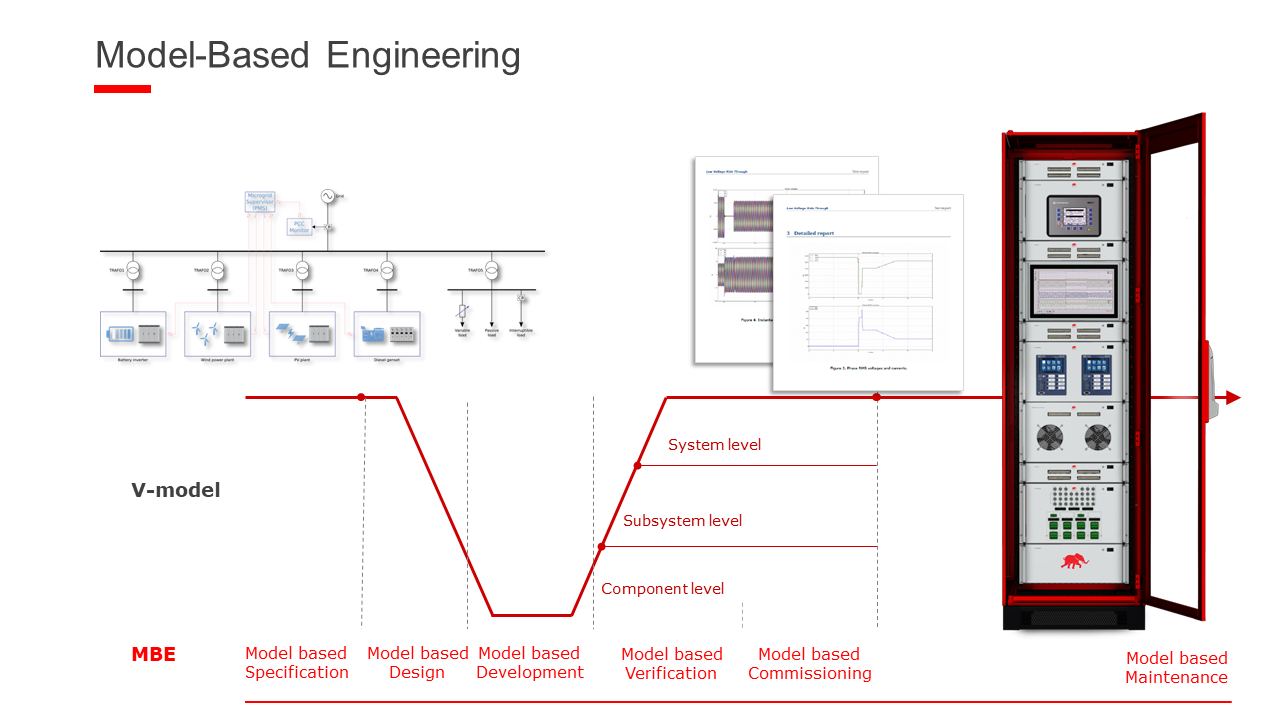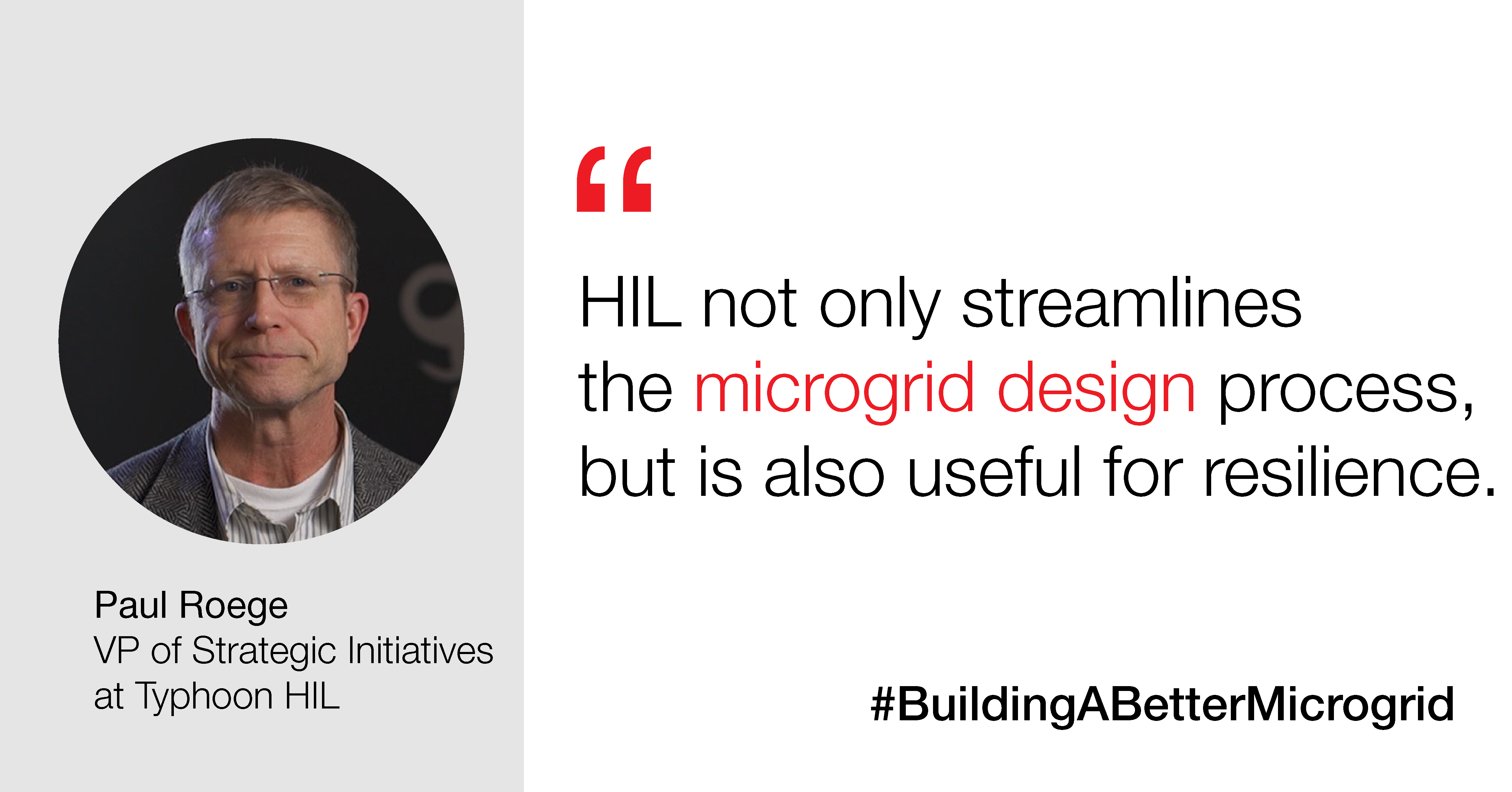Introduction
This article is the first in a series from the Microgrid Conference Panel 2019 – Making Sure Your Microgrid Will Work: Risk Reduction with Controller Hardware In the Loop (C-HIL) and Model-based Engineering.
Paul Roege, Vice President for Strategic Initiatives at Typhoon HIL, introduced panelists from Schneider Electric, Schweitzer Engineering Laboratories, Eaton, Raytheon, and EPC Power. He adeptly described major problems with the current approach to microgrid development.
And how C-HIL and model-based engineering allow for a more integrated approach to microgrid design and testing throughout the entire project lifecycle.
Challenge | The Traditional Approach to Microgrid Development is Risky
Model-based engineering is not a new concept. Model-based analysis has been widely used in the aerospace industry where the entire system is modeled and rigorously tested. A flight simulator ensures the plane functions as designed and is completely safe for this very critical application.
We’ve been doing this in aerospace for decades. Before airplanes fly, there is model-based analysis or simulations.
Paul Roege states that this rigorous design and testing process should extend to microgrid development. However, the current approach to microgrid development is disconnected and prone to errors.
There are various teams involved at different stages of the microgrid lifecycle from design to commissioning. These disparate groups make decisions independently from others. And does not take the whole microgrid system into account.
It’s not a tightly integrated process. And it can be prone not only to inefficiency, but potential errors.

Prior to developing a microgrid, one group does a techno-economic analysis – the market opportunity and technological consideration. This includes a cost-benefit analysis for a specific site. And what the microgrid system will look like: Will there be energy storage, solar PV, wind, or other DERs?
Then another group builds the model and tries to understand how the system will behave, regardless of the initial techno-economic analysis. There’s also a different group that considers the safety aspect.
They’re talking about the system but they’re not really looking at the system.
This highly disconnected process does not take the entire system’s performance into account, leading to inefficiency and errors.

Solution | C-HIL and Model-based Engineering Reduce Risk
An integrated approach to microgrid development can streamline the microgrid development process. This process allows for a more holistic view of a microgrid project’s entire lifecycle from conception and design, to implementation and maintenance.
Model-based Engineering allows you to have an integrated database or model of the system.
Roege adds that this emergent approach, ultra-high fidelity Hardware-in-the-Loop (HIL) simulation, can streamline the microgrid design and testing process. It allows various teams to have all the attributes of the microgrid system in a single database or model of the system.
That way, teams responsible for individual stages of the microgrid lifecycle could do their part while keeping the overall system in mind. Instead of looking at individual components (i.e. power circuit failure), systems engineers can see the bigger picture.

In a C-HIL microgrid testbed, the actual microgrid controller is directly interfaced with the HIL simulator which can simulate the power system in ultra-high fidelity and in real-time. So the real controller cannot distinguish the real power system from the virtual one.
Systems engineers can design and test microgrid controllers in real scenarios. They can optimize their microgrid design based on these test results prior to deployment in the field.
HIL not only streamlines the microgrid design process, but is also useful for resilience.
Also, microgrid control system designers are free to experiment with different microgrid designs and test them without concern about damaging equipment or having outages on site.
A more integrated solution with Controller Hardware-in-the-Loop and model-based engineering can significantly de-risks and accelerate microgrid projects.
Credits
Author | Samantha Bruce
Visuals | Typhoon HIL
Editor | Debora Santo



